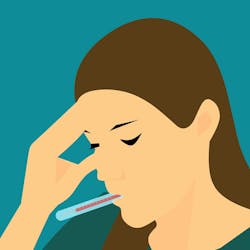Few—but many more than reported—had COVID-19, studies estimate
An analysis of serum samples collected as part of routine COVID-19 testing from 16,025 people of all ages at 10 U.S. sites from Mar 23 to May 12 suggests that, while most people had not been infected, at least 10 times more people were probably infected than previously reported, according to a news report by the Center for Infectious Disease Policy and Research (CIDRAP) at the University of Minnesota, which was based on a study in JAMA Internal Medicine.
The study was led by researchers from the Centers for Disease Control and Prevention (CDC). It is the first known U.S. multistate and city-level serosurveillance study. It produced adjusted estimates of the prevalence of seroreactivity against SARS-CoV-2, the virus that causes COVID-19, ranging from 1.0 percent in the San Francisco Bay area to 6.9 percent in New York City.
Sampling was done at sites in California, Connecticut, Florida, Louisiana, Minnesota, Missouri, New York, Pennsylvania, Utah, and Washington state. The vast majority of people at each site had no detectable coronavirus antibodies, the authors noted, adding that it is not yet known whether or how long antibodies to COVID-19 confer future immunity to it.
The extrapolated number of infections at each site ranged from 6 times (Connecticut) to 24 times (Missouri) the number of reported cases. In Connecticut, Florida, Louisiana, Missouri, New York, Utah, and Washington, COVID-19 infections were an estimated 10 times higher than the number reported. The seroprevalence estimates likely reflected infections that occurred at least 1 or 2 weeks before specimen collection, the authors said.
The study authors said their findings show that most people in 10 diverse geographic areas of the United States had not been infected with COVID-19 as of May. "The estimated number of infections, however, was much greater than the number of reported cases in all sites," they wrote. "The findings may reflect the number of persons who had mild or no illness or who did not seek medical care or undergo testing but who still may have contributed to ongoing virus transmission in the population.

